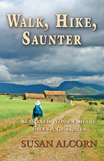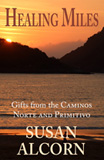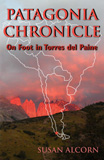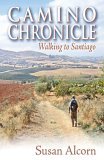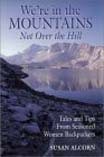
Help support this site by using our Amazon or Six Moons Design buttons for any purchase
Gear:
We are including just gear we have personal experience with, and like.
REI - we get most of our backpack stuff there, and would like to get it all there. REI is gradually getting on the ultralight backpacking revolution that has been happening in gear, but we still have to do some shopping on the net.
Based on my conversations with other backpackers over the last few years, ultralight backpacking is widely accepted. Most people know of Ray Jardine, Gossamer Gear, Zpacks, Six Moon Designs, etc., and are adding more and more ultralight backpacking components to their gear.
Gear on Amazon or Six Moons Designs
You can now get a lot of top quality backpacking gear on
Amazon, usually through their marketplace vendors. REI specializes in
outdoor gear. If you know what
you want, you can help support this site by buying through the Amazon or Six Moons link. 
![]()
Backpack - the first step in going to ultralight backpacking
Our first pack was the Golite Breeze - I used this pack for several trips on the John
Muir trail, and we both used it on the Camino de Santiago and on a Le Puy to Figeac trip (a Camino route in France). This is a
12 ounce pack - a bag with a mesh outer pocket on the back, and a mesh
pocket on each side. No waist belt. It is rated for 20 pounds.This was doable, but I
missed the waist belt. However, it was so easy to just take off, that
I would take it off every time I stopped. For the Camino, it was
perfect as we just carried personal gear and light sleeping bags. Golite is now out of business, but there are many alternatives. A good substitute would be one of the packs from www.ula-equipment.com/cdt, Gossamer Gear, Zpacks. or Six Moons Design. Six Moons packs have 3 choices for shoulder straps - the normal weight on shoulders and hip belt type, a narrow version of that type, and a harness type. The harness keeps the pack close to your back.
GossamerGear's G4 - I met someone wearing this on the JMT, when I had the Golite
Breeze. It had a waist belt, and that was appealing, so I ordered it
when I got home, and used it when I thru hiked the JMT the following year.
It is about 11 ounces. The shoulder straps and waist belts have velcro
pockets for padding. You can put in the foam pads that come with the
pack, or you can stuff them with spare socks, etc. which is what I did. This
pack has a little more capacity than the Golite - I carried up to about 39
pounds, but it also is designed to work best with about 20 pounds.
Ultralight gear uses lightweight materials, so has to be treated more
gently than a traditional backpack - don't toss them on rocks, yank up by
the straps, etc. They have a more expensive model called the
Mariposa, that
is similar weight to the G4, but can carry more weight, due to carbon fiber
stays. I got one of these since my G4 wore out after 3 years of use
on granite. I could have got a replacement G4 at a discount, but the
Mariposa is better for the larger loads I sometimes carry.
Granite Gear Vapor Trail - This is a well constructed 2 lb pack with waist belt and built in back support. My wife has back problems and wanted more support than the G4 above. Her loaded pack weight is about 25 lbs for our PCT segments. She got the Vapor Trail and has used it for several thousand miles and still likes it. Granite Gear has now replaced this with the Crown V.C. 60 from Amazon or from REI
ULA Circuit - On PCT sections requiring lots of water, I used a ULA Circuit 32 oz pack, as it handles 40 lbs better. http://www.ula-equipment.com/circuit.htm or from Amazon. If I expect to carry 40 lbs for multiple days, I will wear my ULA Catalyst 3 pound pack.
My current backpacking pack is a Zpacks Arc Blast - very water resistant, so I don't use a pack cover, just line it with a trash compactor bag. This is the most comfortable pack I have ever had.
Six Moons Design ADC >My current travel/backpacking pack is a Six Moons Design ADC+ - water resistant, lots of compartments, good fit once you master all the possible adjustments. One important note for women. There is a choice of pack straps. Get the S Curve, as the regular cuts into the side of the breast.
Clothing
We use layers and wear lightweight synthetic clothing. Synthetics dry quickly, and we try to wash them daily. For pants I wear Ex Officio Amphi long pants. They also come in a convertible version. For European hiking, I take two pair, one usually just for town, as we are in a town or someone's house each night. They are getting hard to find, but REI has some equivalents. Most of the time II wear a long sleeve shirt with sleeves that can be rolled up, such as the Ex Officio Air Strip or Mountain Hardwear equivalent. The Napoleon pocket on the Mountain Hardwear shirt is nice. If I am fairly sure of good weather, I may use a short sleeved tee. I use a long sleeved tee for a sleep shirt that is also a morning layer, and sometimes an evening outer layer. For a warm jacket, I carry a Montbell UL down sweater and a lightweight fleece jacket I got from REI.
Shoes or Boots
We have now hiked and backpacked about 6000 miles, 3000 on PCT and other US trails and the rest on Camino related trails in Europe. Most thruhikers use trail runners. When I need boots (required for Kilimanjaro) I used Lowa Renegade GTX MIDs and was quite satisfied with them. On an early France trip I wore the Lowas. Iit was in May and many days walking thru mud, snow, running water, cow pies, etc. and my feet always stayed dry. In more recent years I wear running shoes even under those conditions.
I recommend that you buy boots or shoes at your local outdoor store to insure the
best fit. Be sure to get at least a half size larger than your shoe size, as
feet swell when hiking with a backpack. If you have to mail order,
Amazon has an outdoor sporting goods section.
from Amazon
On the PCT we both switched to running shoes. I used the
Asics Gel Nimbus from REI (with the green Superfeet standard orthotics) and Susan initially used New Balance 766s (with her custom orthotics). Both were chosen for high
ventilation, no gortex and maximum cushioning, in order to deal with desert
heat. Susan used Brooks Cascadias for most of the PCT and some of our hikes on Camino trails. I continued to use the Asics Gel Nimbus for about 15 years of hiking. The last year or two Susan tried
New Balance Leadvilles (mens). Currently we are both using Altra Lone Peaks - zero drop trail runners. We like them, but have not done a long hike with them yet. You can get the
>Altra Lone Peaks from Amazon. or
from REI. The zero drop means that your heel is about the same level as the ball of your foot when standing, and is closer to the barefoot stance than the normal shoe. This is supposed to reduce leg joint issues.
My experience with
Asics Gel Nimbus is that after about 500 miles they have
lost most of their cushioning. My feet are fairly tough by then, so I still
get another couple of hundred miles. At 700 miles they are showing various
signs of physical failure - cracking in various spots, sometimes some delamination of rubber from fabric, etc.
I'm not sure that I will ever go back to boots again unless I am
expecting weeks of cold and wet. Almost all users of running shoes for backpacking also use two hiking sticks, and I strongly recommend that.
Susan and I use Black Diamond Ultra Distance folding fixed length poles.
from REI
from Amazon
If you have problem feet and need custom orthotics or boots, this site looks good, though we have not used it: http://www.randymerrell.com
Crampons
In June or July in the Sierras, and even into August in
Washington, you will encounter snowfields. In early morning, crampons may be
useful.
If you use running shoes and have to travel over a lot of ice, screw shoes are a poor man's crampons. http://www.skyrunner.com/screwshoe.htm tells you how to put screws in your running shoes.
Some PCT hikers use instep crampons, others have found the
Kahtoola Microspikes From REI
![]() to work better. We
finished the PCT in 2010, doing Washington in Aug - Sept. Just had our trail
runners.. There were a couple of snowfields where we would have used
crampons if we had them. For those conditions, I don't think the microspikes
would have had enough bite.
Kahtoola also makes a crampon that fits on trailrunners.
to work better. We
finished the PCT in 2010, doing Washington in Aug - Sept. Just had our trail
runners.. There were a couple of snowfields where we would have used
crampons if we had them. For those conditions, I don't think the microspikes
would have had enough bite.
Kahtoola also makes a crampon that fits on trailrunners.
Socks
I have worn a lot of socks ranging from the Thorlos hiking with heavy cushions to Injinji toe socks. I've evolved to wearing just the coolmax liners. I sometimes have to tape a toe or two for the first few days, but have found that hot feet is the cause of most of my foot problems, and wearing just the liners resolves that. The toe socks are thin, lightweight and I like them, but they wear holes in a week of hiking or less. Coolmax liners from REI
Tarp or TarpTents-
We used a little 5 pound Sierra Design tent for years, but finally switched to a Golite tarp - the Cave - 12 oz plus 5 oz of stakes. This was a drastic change, but for the better. We have not hit really bad weather, just a few light rains. Since there is no bottom, it takes more care in placing. It also takes a while to setup - about 14 different cords to wrap around rocks, tie on to trees, or stake down, and a couple of walking sticks to hold it up, if no trees around. Being able to look out at night anytime you want, and still stay sheltered is a nice change. On at least one instance, a bear checked us out nose to nose, while I slept, but Susan used her school teacher playground voice and said 'get out of here' and the bear moved as promptly as any fourth grader.
I had one really cold night on Mt. Whitney, and realized that a tent provides quite a bit of warmth that is lacking in a tarp. If you are hiking during cold weather, either use a tent, or have a sleeping bag that is rated about 20 degrees warmer than your normal one, or use bag bivy & vapor barrier for further warmth.
I've researched lightweight 2 person tents for cold weather and buggy area use. There are several single walled tents or tarptents that I considered. Each weighs about 2 lbs. With single walled tents, condensation can be an issue. The ones I looked at seem to ventilate well enough so that it's not a serious problem. One other consideration: delivery time. These tents are hand made by active backpackers, who frequently are out on the trail. If you are going to get one of these tents phone back and forth enough so that you are comfortable that the promised delivery date can be met.
I decided on Henry Shires Tarptent www.tarptent.com Cloudburst. with extended beak and sewn in floor. Used it on about 1100 miles of Pacific Crest Trail sections. The zipper on the bug screen has needed repair a couple of times. The tent performs well, even in rain and high winds. Condensation is a problem on any single walled tent, but we only had this when camping on grass. Some people carry a sponge or towel to remove it. Twice when we had the rear of the tent into the wind, the back stake blew out, so in windy areas I would put a large rock on the back stake.
Six Moon Designs Six Moons Design tarp Haven II.
Wanderlust Gear www.wanderlustgear.com Nomad 2-4-2. I like this tent but eliminated it because delivery time was not fast enough.
At the ALDHA-West gathering Bill Gurwell had his tarptents and ponchos on display. Both are excellent. The tarptent is high enough to sit up in, and lots of covered area outside of the netted area. It does have a big footprint, but would be my choice if I were going to buy one now. email bgurwell@hotmail.com for more info. He also has sewing plans.
We use Tyvek Home Wrap for a groundcloth - strong and lightweight. We got ours from Andy's Tyvek page http://www.geocities.com/amytys/Tyvek.htm Check that link for info on how to use Tyvek, as well as ordering info if you just need 3 foot widths.
For our Torres del Paine trip in Patagonia, we had to have a four season tent, so ordered a Stephensons Warmlite 2R. It performed well under extreme wind and driving rain conditions. If I ordered it again, I would make a couple of changes. We ordered side windows - for stormy conditions they are always closed, so don't order. We didn't order double layer ends - should have done so. We stayed dry as the main part of the tent is double wall, but the silnylon ends tended to mist in driving rain, and got condensation during milder conditions. P.S. The website owners are nudists, so you will see some tasteful nudity when browsing their site.
Most of our hiking is now shelter to shelter, but if I were to buy another tent, it would be the Zpacks two person tent, light and roomy for the weight.
Parka and rain gear
Currently wearing a Montbell UL inner down parka, though continually thinking of a synthetic option. .
Using Marmot Precip rain pants and Marmot Precip Jacket. Susan uses a Packa www.thepacka.com. My Zpacks pack is fairly waterproof so I don't use a cover.
Bear Canisters
We had two
Garcias
![]() that we used and abused for many years, but for the
JMT, rented the Bearikade Expedition from
Wild-Ideas.net It was about half the weight of the Garcia, and
allowed me to stuff in about three more days of food. I used freeze dried,
and repackaged everything, so didn't have to carry the outer foil
packaging, or haul it out as trash. The Bearikade also has a wider
mouth than the Garcia, so easier to get things in and out. It cost about
twice as much as the Garcia last time I checked. Wild ideas has special
rental rates for JMT, PCT, etc. I heard that JMT was $50. Their rental
page is
https://id215.chi.us.securedata.net/~wild-ideas/rent.html
that we used and abused for many years, but for the
JMT, rented the Bearikade Expedition from
Wild-Ideas.net It was about half the weight of the Garcia, and
allowed me to stuff in about three more days of food. I used freeze dried,
and repackaged everything, so didn't have to carry the outer foil
packaging, or haul it out as trash. The Bearikade also has a wider
mouth than the Garcia, so easier to get things in and out. It cost about
twice as much as the Garcia last time I checked. Wild ideas has special
rental rates for JMT, PCT, etc. I heard that JMT was $50. Their rental
page is
https://id215.chi.us.securedata.net/~wild-ideas/rent.html
The
BearVault
![]() appears to be a step up from the Garcia - 12% more capacity (taller) and 5
ounces lighter. Cost is similar to the Garcia. ** update on original bearvault 7/11/03 Yosemite bears spinning or prying lid off. You can get an upgrade from bearvault **. We stored one of our Garcias in an outside shed with birdseed in it. In the spring we discovered that rats had chewed a hole into it, destroying both the lid and body, so it is not totally varmint proof, given enough time.
appears to be a step up from the Garcia - 12% more capacity (taller) and 5
ounces lighter. Cost is similar to the Garcia. ** update on original bearvault 7/11/03 Yosemite bears spinning or prying lid off. You can get an upgrade from bearvault **. We stored one of our Garcias in an outside shed with birdseed in it. In the spring we discovered that rats had chewed a hole into it, destroying both the lid and body, so it is not totally varmint proof, given enough time.
There is also the Ursack, which is a drawstring bag - very light, but has not gotten approval from the National Park Service or Forest Service for use in areas requiring bear containers. Bears may thoroughly mash the contents, even though they can't get anything out, so might be good for trash you are carrying out. We used two of these when we section hiked PCT segments J and K in 2004. This is not a container required area - saw wild bear scat (no plastic), but no bears. More of a nuisance to use than the canisters and the ziploc "odorproof" liner didn't zip after a few days. However, the outer bag was tight enough so I didn't worry about bears or rodents.
The maximum amount I know has been stored in a Garcia - 16 days per Ken and Marcia.
Sleeping Bags:
I used to use a
Feathered Friends
Great Auk - it's a 35 degree bag that has a slot on the bottom for your
pad - instead of down. In the summer, I use it upside down if hot
weather. - about 35 oz. The bag is designed to be an outer bag for extreme
cold situations, so is extra roomy. I now use my
REI Sub Kilo
![]() 20 degree bag -
29 ounces. I keep
thinking I should get a synthetic stuffing, so it will be warm even if
wet, but hate to spend the money, so make sure bag stays dry - I keep it
inside a turkey oven bag when backpacking. Susan uses an REI Sub-Kilo. For snow camping, we both use a Mountain Hardware bag bivy - adds 10 degrees. We have ordered vapor barrier bag liners from Feathered Friends for our next snow trip - adds another 10 degrees.
REI 20 degree F bags
20 degree bag -
29 ounces. I keep
thinking I should get a synthetic stuffing, so it will be warm even if
wet, but hate to spend the money, so make sure bag stays dry - I keep it
inside a turkey oven bag when backpacking. Susan uses an REI Sub-Kilo. For snow camping, we both use a Mountain Hardware bag bivy - adds 10 degrees. We have ordered vapor barrier bag liners from Feathered Friends for our next snow trip - adds another 10 degrees.
REI 20 degree F bags
![]()
If you are in the UK,
PHD has
some very light but warm bags.
Most recently we've been hiking in Europe and sleeping in shelters. For that we are using Zpacks quilts - less than a pound.
Tape for Feet:
When hiking Camino de Santiago in Spain, discovered
Hartmann Omnifix elastic breathable tape for wrapping feet (wife has
bunions) and for cutting in smaller pieces for wrapping toes and covering
hot spots. It has a peel off backing that exposes the adhesive. It
comes in rolls 2 inches by 10 yds, and we finally ran out. Looked for U.S.
source and in 2001 couldn't find in medical supply houses or drugstores. In Spain
it is in the pharmacies. It is now available on Amazon from multiple sources.. Just
enter hartmann and omnifix in Google and you will find it. Hypafix or
Endurafix are both the same type of tape except they come in a 1 1/2 inch
width only. All three tapes are breathable and come with a backing that is
peeled off as the tape is applied. Cover-all is the same basic tape. All
the tapes are somewhat thin and not at all as tough as duct tape. Leukotape and Endurotape breathable but more like duct tape.
For an entire book on fixing your feet, by an expert: There are many ideas on foot fixing - all in John Vonhof's Fixing Your Feet which we got before doing the Camino. His new edition (4th) is out and you can order from Amazon ![]()
Plastic Bucket
The plastic bucket we use can be found at
http://www.preparedness.com/folpocsin.html . Here is
another source with a bucket that seems similar and is a
little cheaper:
http://www.scoutgear.com/as703393.html If you go to Amazon
and search there for fold up water basin you will see the same
bucket as above.
Stoves, fuel consumption
Both breakfast and supper we boil 1 1/2 liters of water for
food, beverages and cleanup. We have used a
MSR Whisperlite
![]() with
white gas 1.3 liter and .9 liter
Titanium Pots
with
white gas 1.3 liter and .9 liter
Titanium Pots
![]() . We still use
this stove for snow camping and international travel. For local
and PCT backpacking we use a
Snowpeak Gigapower canister stove.
. We still use
this stove for snow camping and international travel. For local
and PCT backpacking we use a
Snowpeak Gigapower canister stove.
![]() We fill the 1.3 pot with water, boil, scoop
out enough for the freeze dried meal or tea & coffee in am, and it goes in
the cozy for later beverages and cleanup. The freeze dried meal
is in the .9 liter titanium pot, and it goes into its
cozy as soon as water is added. We use 4 oz of white gas per day
to boil this amt of water for the two of us, so 2 oz per person
per day of white gas. In 8 days we go thru a 32 oz container.
With the Giga Power canisters, it is similar, but slightly less
weight needed to heat same amount of water. One
large canister
gives us about 14 boils of the 1.3 liter pot, or 7 days.
REI Gigapower stoves
We fill the 1.3 pot with water, boil, scoop
out enough for the freeze dried meal or tea & coffee in am, and it goes in
the cozy for later beverages and cleanup. The freeze dried meal
is in the .9 liter titanium pot, and it goes into its
cozy as soon as water is added. We use 4 oz of white gas per day
to boil this amt of water for the two of us, so 2 oz per person
per day of white gas. In 8 days we go thru a 32 oz container.
With the Giga Power canisters, it is similar, but slightly less
weight needed to heat same amount of water. One
large canister
gives us about 14 boils of the 1.3 liter pot, or 7 days.
REI Gigapower stoves
![]()
One person can save weight by using an alcohol stove. . A good alcohol stove site:
www.antigravitygear.com.
$12 for a 0.4-ounce stove with windscreen and a tiny cup
for measuring the alcohol. There is a stove called the
Penny Alcohol
Stove that we used on our PCT section A trip (110 miles). It
used 2 oz of fuel to boil .9 liters of water, so similar fuel
consumption to the MSR. However 2 oz of alcohol would boil the
water and go out. On the MSR it would simmer it for a while.. Re
resupply boxes and fuel. It's best to buy at resupply point.
Fuels can't be flown. US Postal Service will allow
butane/propane canisters and alcohol to be mailed ground only
provided they are packed and labeled properly. See Ken
Power's link on this:
http://www.gottawalk.com/shipping_fuel.htm . For example, if
you ship a metal quart container of alcohol, you need to pad it
with enough paper towels to absorb a quart of liquid, put that in something like a leakproof ziplock all within a well padded box. I
mailed a can of alcohol to a resupply point, and it did leak
some, but leak was absorbed by the towels, so the packing is
important. UPS Ground will also ship alcohol and isobutane as
long as its labeling meets usps requirements for hazardous
materials.
Our Gear List for PCT or JMT:
For a direct link to the spreadsheet: Google Docs
GPS use:
When we carry a Garmin Etrex 30, we just turn it on a few times a
day, when we want to know exactly where we are. Sometimes just
the elevation feature is sufficient to pin down the location.
However, we carry maps with GPS waypoints marked on them, and
usually use the GPS to find the nearest waypoint. We use Nat'l
Geographic Topo to make the maps and then mark the waypoints.
The waypoints are then downloaded to the gps. The gps can't load
Topo maps, so we use the Garmin MapSource product to load
appropriate maps to the gps.
Etrex 30 from REI
![]() Mostly now we just carry a smart phone with spare batteries, and turn on only when absolutely required for navigation.
Mostly now we just carry a smart phone with spare batteries, and turn on only when absolutely required for navigation.
I think a cheaper gps could be used that only displayed the
current gps coordinates, if one had a list off waypoints and
their descriptions printed out. It would be easy to determine
which waypoints your current location fell between.
Cameras:
This is still evolving for us. We have been using some of the
Canon Digital Elph series as they are small, light and reliable.
They do not do as well in low light situations with no flash as
some other brands, but otherwise we are happy with them.
My current camera is my smartphone - an LG G4.
Susan traded in her
Nikon Coolpix P80 for a
Canon EOS T3i. That has been a good purchase though heavier than the point and shoots..
Make your own gear:
We haven't done this yet, but a number of the lightweight backpacking sites have patterns and http://www.questoutfitters.com/ is one of the better sources for materials. Also has some patterns.
Journal Keeping.
There are a whole lot of options now, how to keep devices charged is an issue. PCTer Gadget keeps on top of this..
Gear Links
www.trailjournals.com - a great site for following current
long distance hikers. In addition to journals, many of the
hikers include gear lists with weight and photos. For example,
check out grand slammers (triple crown plus ADT) Ken and Marcia's journal and gear
for their American Discovery thru-hike.
www.gottawalk.com - Ken and Marcia's website, detailed gear info, weights, etc. lots more.
www.backpackgeartest.org is an excellent site for finding
reviews of lightweight gear. There is also a Yahoo Group
called BackpackingLight that has useful and lively
discussions, usually on topic. There are three listservs
that have some info, but a lot of off topic discussion pct-l,
at-l and cdt-l for Pacific Crest Trail, Appalachian Trail and
Continental Divide Trail.
backpackinglight.com is an annual subscription site that does extremely complete gear tests and reviews. If you are serious about long distance hiking, it is worth the subscription cost of about $35 per year.
www.trailquest.net The
two owners of this site (Rainmaker and Brawny) have hiked most
of the long distance trails in the U.S., and are segment
hiking the CDT now. They have designed and built a
number of ultra lightweight items, including tarps,
tent-tarps, bug nets, sleeping bag liners, etc. Brawny has
written a book, available on the site, that is
fascinating reading. Brawny's gear is available on
www.antigravitygear.com
Emma Gatewood first hiked the entire 2160 mile Appalachian Trail at the age of 67. She last hiked it at the age of 76.
Page Changed: April 6, 2024 10:29
[Home][Top of Page] -
Please send comments, suggestions to backpack45 circleatsign yahoo dot com
All
text and images copyright © Shepherd Canyon Books - 2003 through 2020
“backpack45.com is a participant in the Amazon Services LLC Associates Program, an
affiliate advertising program designed to provide a means for sites to earn
advertising fees by advertising and linking to amazon.com”
